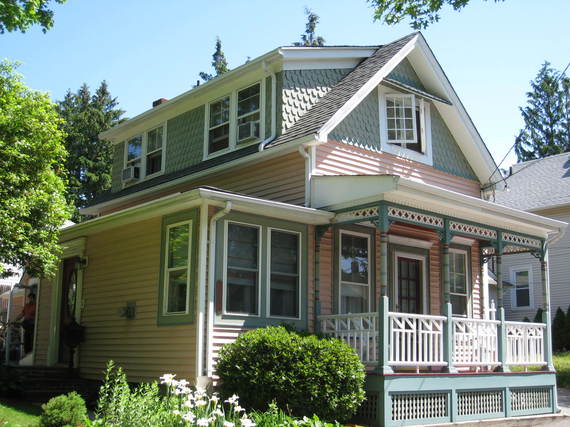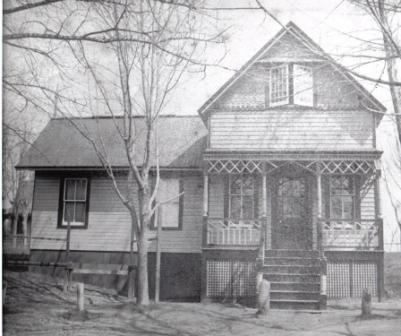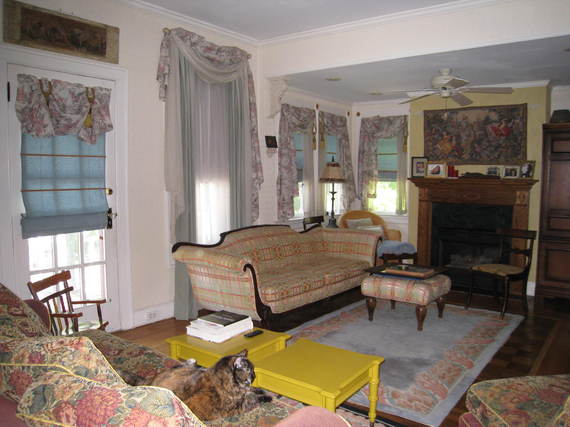New York's Long Island is more recognized and thought of as typical suburbia, and not being a historic center with landmarked buildings. The landscape of the Island is not all about "Levittown" type of structures. There are many communities overflowing with history going back a few centuries. This is reflected in the beautiful architecture that has been restored to pay homage to the past.
Victorian Restoration Gains Historic Recognition
When owning one of these structures it becomes a labor of love. These abodes need nurturing and care and, in return, give back a beauty that new architecture will never touch. I am proud to say that the humble abode I owned and cultivated as a loving restoration project, is now listed on the National Register of Historic Places. After years of restoring my Victorian home, this is a humbling honor and reward for hard work. The house is in the beautiful and unique one square mile Village of Sea Cliff, situated on the North Shore of Nassau County in Long Island upon a 120-foot cliff overlooking the waters of the Long Island Sound.
My house was chosen to be placed on the New York State and the National Register of Historic Places as representative of the Methodist Camp Era in Sea Cliff. It is among 12 residences in the village that were constructed during the period of 1871-1884 and directly relate to the camp meeting era. The designation of being a historic landmark is shared by famed structures and provides protection from demolition and any harmful actions by any level of government
As an interesting side note, unlike most local designations, as a national landmark It also grants owners the rights to preserve their structures the same way that any homeowner has. Surprisingly owners even have the right to demolish or alter the site if they so wish. As one who lovingly restored a home to its original beauty this can be heartbreaking watching a new owner move in only to add modifications.
Moniker Recognizes Home's Origins
The abode is known as the "Harding House" named for its builder and original owner Stephen Harding. Mr. Harding was a photographer born in 1841 in England and immigrated to the United States in the 1860's. During the late 1800's and early 1900's, after the meeting era, Sea Cliff became a huge resort community with many hotels. I was told by Mr. Harding's granddaughter that after the meeting era he was hired as a photographer by the hotels in Sea Cliff. He built the home in 1878 to house his wife and two children along with his studio.
Having been given Harding's original photos of the home I painstakingly restored the Victorian back to its original structure's beauty and charm. As stated by Long island Traditions director Nancy Solomon, the Harding House is now recognized as one of the best surviving examples of Vernacular Queen Anne homes in Sea Cliff. Adding to its charm is the location on Prospect Park where Methodist Camp meetings were held in the 1870s and 1880s.
This Victorian dollhouse has been restored to its original sheathing and form including the scalloped shingles, casement gable windows, and the decorative porch.
"The Harding house is significant as one of the original homes built during the period when Methodist Camp Meetings were held in Sea Cliff. Sea Cliff was one of the major meeting places during the Camp Meeting Movement in the post Civil War period in the northeastern United States. The house is also an excellent well preserved example of the types of homes favored by Methodists - close to natural waterfront landscapes, situated so that neighbors could observe one another, and built for summer seasonal living when the Meetings took place. The Harding house is also important because it reflects the small cottage industries that developed in response to the Meetings. Stephen Harding, the builder, as a photographer who documented the people who attended the meetings. He also established a business studio in the home that continued to operate after the Camp Meeting era ended in Sea Cliff. The modest design and architectural embellishments reflect vernacular building practices common in the late Victorian era."
Solomon took her task of submitting Sea Cliff, NY structures to be placed on the National Register seriously, as she does with her battles to preserve all historic structures. She delved into researching the era and its importance. These structures continue to teach us as "lived in" museums. With Nancy's hard work Sea Cliff has gained another home recognized by New York state as well as the National Registry as being Historic.
Sea Cliff Lives Among Famed Gold Coast
The legendary Gold Coast communities of the North Shore of Long Island is home to the cozy village of Sea Cliff. The rich history of the Gold Coast has been recorded in many novels from the Great Gatsby to just about any Nelson Demille novel. The quaint village is recognized for its historic architecture, with more homes and buildings built before 1940 than any other Long Island Nassau County community.
Sea Cliff is well known as a Victorian Village enclave with its many Victorian, Queen Anne, and Gothic style architecture. After spending most of my life in Sea Cliff I am proud to of had the chance to be the owner of my own piece of Sea Cliff's historical architecture and restore it back to its original beauty. When I purchased the Harding House it was in need of much loving care. This was truly a labor of love that I took on to restore its splendor. I did much of the hard restoration work myself dancing my way through with my own two hands. Respecting the history and beauty is the key to a successful restoration.
I bought the home in 1994 when it was a rundown covered up shell of its original self. Asbestos type shingles covered much of the original architecture that was to be surprisingly unveiled when I finally had the ugliness removed. Also missing was the beautiful front porch leaving a front door opening to nowhere. As I nurtured my house back to life I also nurtured my own family. My daughter was born, grew and gained beauty as our home did too.
We have since moved on from the restored piece of art that we proudly lived in. For anyone who has dreamt of living in a Victorian you must embrace the home as an artifact and nurture it. Only then will you truly understand the uniqueness and be worthy of owning a historic wonder.


